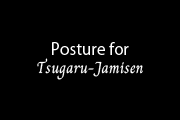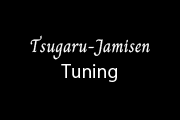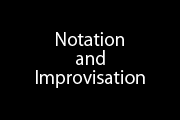
津軽三味線
tsugaru-shamisen

Originally used as an accompaniment to folk songs in the Tsugaru region of Aomori Prefecture, the shamisen gradually became independent with the inclusion of improvisation, and came to be known as Tsugaru-jamisen around the 1960s.
In the 1970s, musicians such as Takahashi Chikuzan began giving solo performances in Tokyo, attracting attention. There was once a custom of blind musicians going from house to house to perform, but now instrumental solos are performed on stage, and young performers are emerging one after another. As solo performances became more popular, players began to use thick necks that produced loud sounds, and a unique performance style that involves hitting the instrument with a stick also became common. Currently, the instrument used is the largest and heaviest of all shamisen.
Episode







Performance and Explanation by Yamanaka Nobuto
※ When musical notation is used in each episode, it is written in absolute pitch.
Music Library
Tsugaru Shiogama Jinku
(Salt-pan folk song from Tsugaru)
Performed at a slightly bouncy, light tempo. Tsugaru Shiogama Jinku is the original folk song that later became Tsugaru Ohara-bushi, one of the five great Tsugaru folk songs. There is a theory that the title of the song changed from Shiogama Ohara-Bushi to Tsugaru Ohara-Bushi in the early Showa period to capitalize on the surge in popularity of Kagoshima Ohara-Bushi.
Tsugaru Yosare-Bushi (folk song from Tsugaru; the meaning of yosare is unclear)
One of the five great Tsugaru folk songs. It is performed with a rhythm close to three beats, but with a slight pause. Originally, the five great Tsugaru folk songs such as Jonkara-Bushi and Yosare-Bushi had a shamisen prelude, followed by the entrance of the drum, and then the song. In modern times, the prelude has become independent, and there are more opportunities to perform it as a Tsugaru-jamisen solo.
Tsugaru Aiya-Bushi (folk song from Tsugaru; the meaning of aiya is unclear)
One of the five great Tsugaru folk songs. It is performed with a rhythm similar to Yosare-Bushi. It uses a unique scale among the five great Tsugaru folk songs, in that different singers might play in a major mode (actually, in an anhemitonic pentationic scale) or minor mode (actually a pentatonic scale with semitones). The way the rhythmic pause is performed also differs depending on the performer.
Tsugaru Jongara-Bushi (folk song from Tsugaru; the meaning of jongara is unclear)
The most popular of the five great Tsugaru folk songs. The structure and rhythm have changed depending on the era in which it was performed, and there are now variants called kyū-bushi (old style), chū-bushi (middle style), shin-bushi (new style), and shin-kyū-bushi (new old style). Shin-bushi in particular is an essential Tsugaru-jamisen solo; it is performed in this video.
